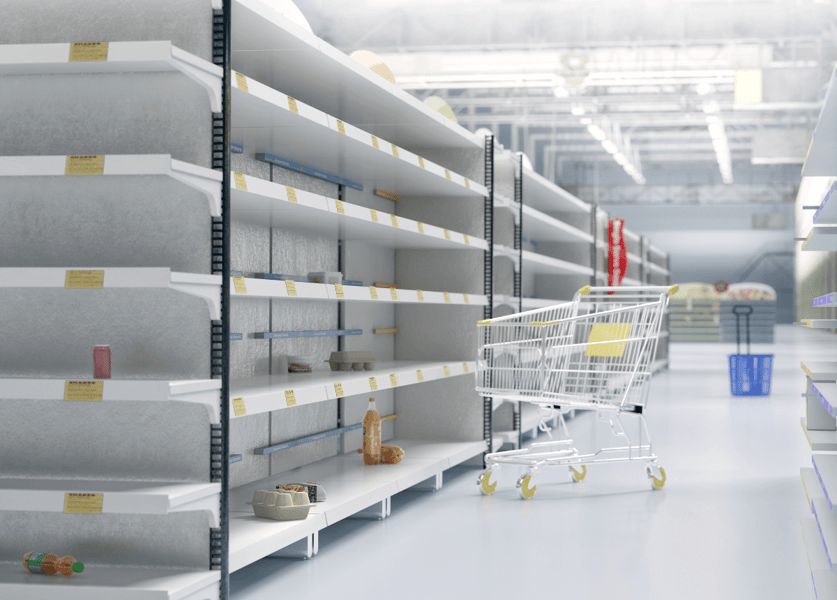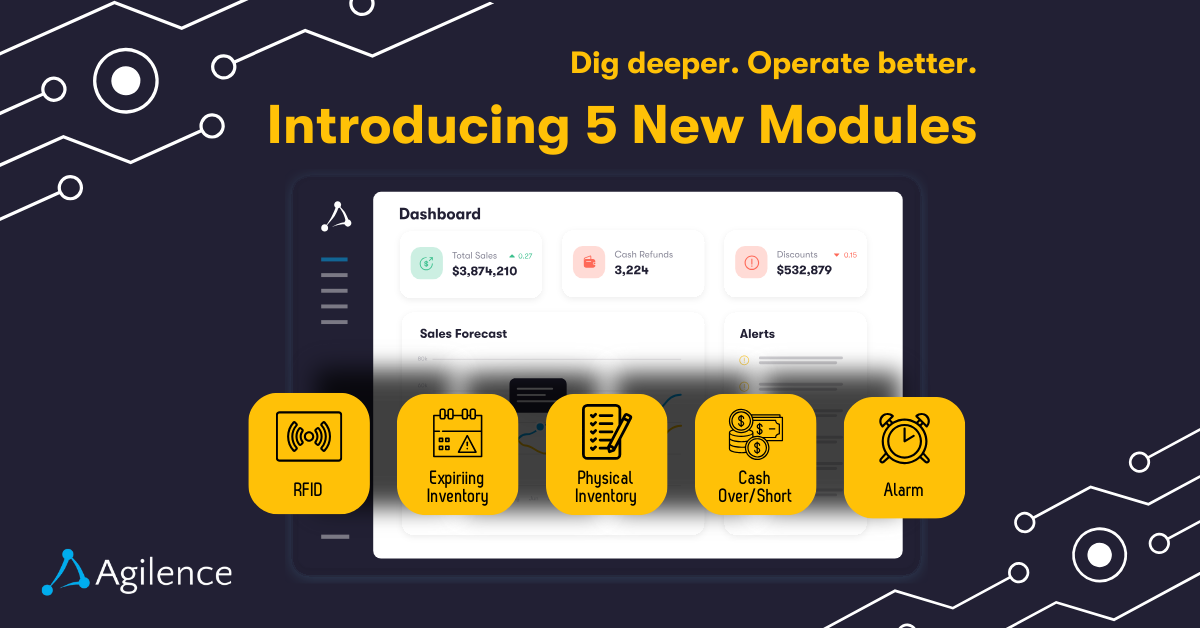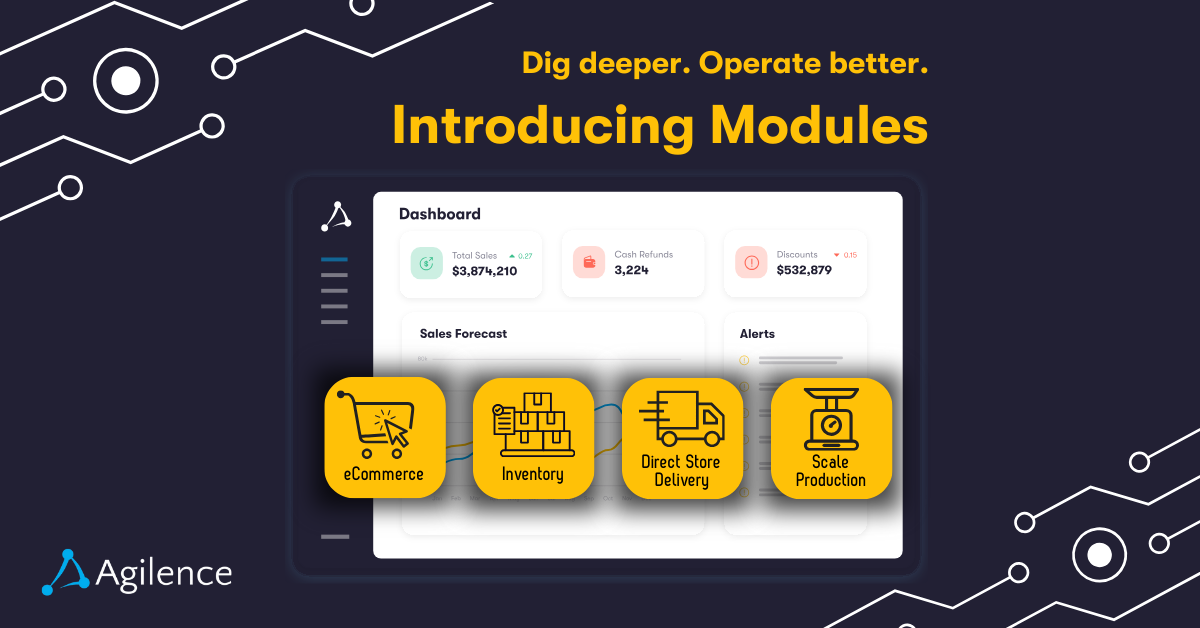Maximizing On-Shelf Availability: LP’s Role in Avoiding Out-of-Stocks
Retail Keneavy Krenzin
Keneavy Krenzin

Inventory keeps revenue flowing. Making sure that the right product is on the right shelf at the right time is critical, yet the problem of on-shelf availability is as prevalent as ever. Maintaining the balance between excess inventory and running out of inventory is a perpetual problem for retailers, but what role does the Loss Prevention team play in this critical balancing act?
Today’s inventory management systems are sophisticated. They can place re-orders and alert on critical stock shortages. While inventory tracking is essential, understanding how OOS happens and putting steps in place to prevent them will improve the bottom line.
What is an Out-of-Stock Incident?
While the concept of an out-of-stock incident is easy enough to understand, in practice it’s hard to define for a number of reasons. The prevailing industry perspective is that the problem should be defined through the shopper’s experience – i.e. their inability to find the product they want, in the right condition (in-date, undamaged, etc.), at the location (shelf) they expect, and at the time of they’re shopping.
However, from the retailer’s perspective, this is hard to quantify and measure because of everything that goes into getting products on shelves. The three most common ways for retailers to measure out of stocks include an audit of physical inventory, an analysis of point of sale (POS) data, and use of perpetual inventory (PI) data. Measuring the impact of OOS gets even more complicated as some prefer to measure in instances, some in unit sales losses, and some in monetary sales losses – all of which can be compiled by analyzing POS data.
What is the Real Cost of Out-of-stocks?
Studies show that the cost of OOS is $200/week for a small grocery store and up to $800/week for larger grocery chains. This cost includes employee labor costs, including unexpected restocking, researching customer issues, reordering, and related activities. These costs do not account for customer frustration and loyalty reduction, estimated at over $1,000,000 in annual sales lost to competitors. Furthermore, increasing on-shelf availability by 50% can potentially lead to an 18% increase in net income.
Retailers must look to the underlying causes of OOS, which include 1) Shelf OOS, instances in which the item is in the store, but not in the expected location, 2) Store OOS, when the item is not available at the store due to forecasting, ordering, or delivery issues, and 3) distribution center OOS when the item was ordered by the store but not sent by the distribution center.
Greater shelf capacity, management, and planogram (POG) compliance are three ways to improve Shelf OOS. However, Store OOS is dependent on data accuracy, appropriate forecasting models, and supply chain efficiencies. Ideally, better data and execution lead to fewer OOS issues, improving both the bottom line and customer loyalty.
However, changes can happen fast. The year 2020 brought previously unheard-of disruption, bringing uncertainty, closures, and a challenging business environment for retailers. With limited availability of everything from paper towels to sacks of baking flour, Store OOS was all over the map. Thus far, 2021 looks like it will have less uncertainty, and retailers predict that the economy will pick up, growing between 6.5% to 8.2%. Data will be an essential predictor as consumer behavior gets back on track.
Bringing Loss Prevention into OOS
There is a clear connection between shrink, loss prevention practices, and on-shelf availability. Loss Prevention (LP) can significantly improve OOS at the store and shelf level and still reduce theft, waste, and error-related losses. To improve Shelf OOS, retailers now use technology that tracks items that have already arrived at the store, helping to keep sufficient supply of goods in the store and improve their shelf level availability.
Loss prevention is helping to reduce instances of both Store and Shelf OOS:
- Reducing shrink from returns. The pandemic increased the use of shopping alternatives. eCommerce skyrocketed, as did third-party delivery, BOPIS, and Curbside Delivery. While protecting customers' and employees' health and safety is critical with new COVID protocols, returned items can get damaged or delayed in getting back to the shelf, adding to shrink and OOS. Proper handling is essential but tracking items from the point of return to the shelf is important to reduce OOS and shrink. Training employees in appropriate return handling procedures helps reduce shrink and avoid Store OOS.
- RFID technology. Stores equipped with RFID sensors improve monitoring of items purchased and returned. Real-time alarms can alert management of items leaving the premises or entering the store that have not been properly scanned. This technology can also help the growing problem of Organized Retail Crime (ORC) by identifying high-ticket items entering the store without having been previously purchased.
- POS data analysis. The use of POS data to measure the impact of OOS and to identify patterns that indicate the root causes is an invaluable resource to any OOS prevention program. POS data can be used to identify the number of OOS incidents occurring, the SKUs affected, unit sales losses, and monetary sales losses. All of this data can be used to inform OOS prevention efforts and measure the success of these efforts once put in place. Often, Loss Prevention teams already have this type of data available in their Exception-Based Reporting (EBR) or data analytics solution.
Reduce Shrink by Improving OOS
Better forecasting, automated ordering, and streamlined fulfillment moves goods faster through the supply chain, so items arrive at the shelf with less disruption.
Combining data from multiple sources, including POS data, customer loyalty information, inventory, and warehouse management systems data will reveal inventory needs that support changing customer behaviors. These trends influence store-level inventory requirements and improve fulfillment and while decreasing OOS. Here are three things that retailers are doing to reduce shrink while improving Store OOS.
- Self-checkout AI. While self-checkout helps drive down labor costs and provides alternatives for customer checkout, there can also be more errors that increase both Shelf and Store OOS. Newly developed AI software tracks customer behavior at the checkout, looking for non-scans, abnormal item weights, higher keyed activities, and other inconsistencies. Stores like Kroger are using this technology to ensure all items are scanned through their POS system accurately. Employees monitoring self-checkout areas should be trained to recognize high-shrink items or low stock items to ensure they monitor those items for abnormalities.
- Cohesive Inventory Management. Customer behavior changed dramatically during the pandemic, leaving retailers with potential data gaps. As we head toward a global recovery, now is the time for retailers to revisit their data collection. With more shoppers shopping online or via 3rd party providers, it’s more important than ever to ensure all item movements are being aggregated. Customer Loyalty extends to online and delivered orders. If customers are unable to purchase their items online, it’s an easier switch to a competitor. Likewise, with reduced customers visiting the store, the impact of OOS items will be even greater. Customers won’t risk visiting stores with limited inventory when there are so many alternatives available. Planning is the key to reducing system-wide Store OOS, and updated data analytics can uncover inventory issues.
- Handling eCommerce returns. Due to the pandemic, retail eCommerce grew by over 32% in 2020, requiring retailers to create robust omnichannel fulfillment models. The investment needed to meet customers’ needs is significant, but another aspect can add to OOS: returns. Online returns grew substantially, with 76% of people on one survey indicating that they returned up to 25% of their purchases. Even low-ticket item returns are expensive to handle, with customers expecting a free return policy. Return tracking is essential to ensure that the right items were returned, received in saleable condition, and returned to the “shelf” (Brick and Mortar or warehouse). Accurate returns tracking helps companies ensure they keep return costs in check and maintain inventory in saleable condition for future sales.
Loss Prevention programs can undoubtedly play a role in supporting on-shelf availability efforts and minimizing occurrences of out-of-stocks. While some would argue that the lost profits that result from out of stocks aren’t a “loss” that falls under the purview of most LP departments but considering the definition of loss set out in the concept of Total Retail Loss, then lost profits due to OOS inarguably falls into the category of loss that LP teams should be working to minimize.
Recently, Agilence teamed up with Loss Prevention Magazine on a research report aimed at measuring the changing perceptions and value of Loss Prevention teams. Responses were collected from a hundred LP professionals at every level, operating in various industries. Download your free copy of the full report today to see the results.
Related Articles

Agilence Launches Five New Analytics Modules To Address Inventory Loss and Enhance Safety
MOUNT LAUREL, N.J., January 10, 2025 - Agilence, the leader in data analytics and loss prevention solutions for retail, super...
The Ultimate Guide to RFID in Retail: How Leading Retailers Are Using RFID for Inventory and Loss Prevention
Retail industry leaders across sectors are embracing RFID technology to transform their inventory management and loss prevent...
Introducing the All-New Agilence Analytics Modules
The NRF estimates shrink at $112.1 billion or about 1.6% of sales in 2022 – money that represents pure lost profit.Subscribe to our blog
Receive free educational resources like exclusive reports, webinars, and industry thought leadership articles straight to your inbox.


